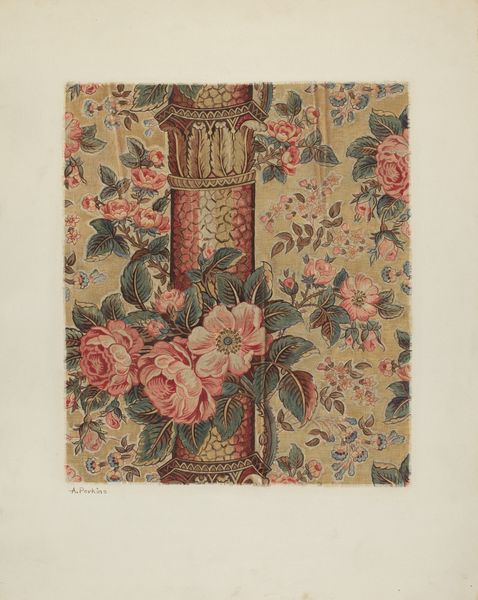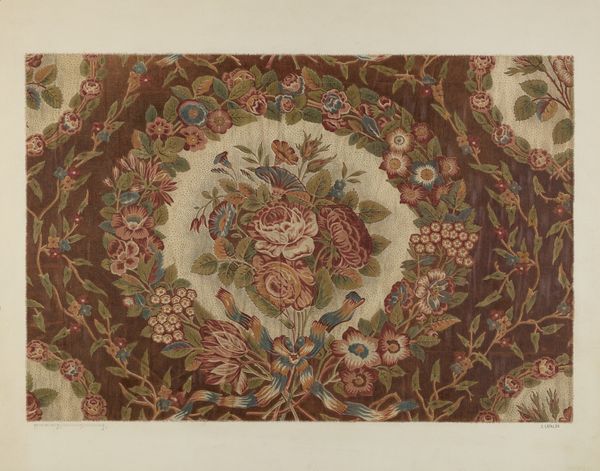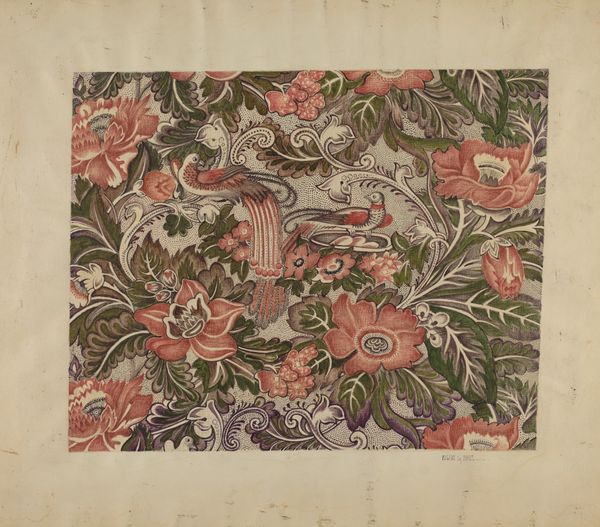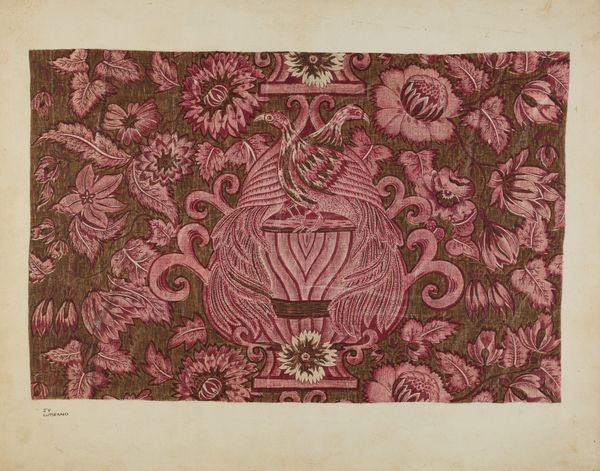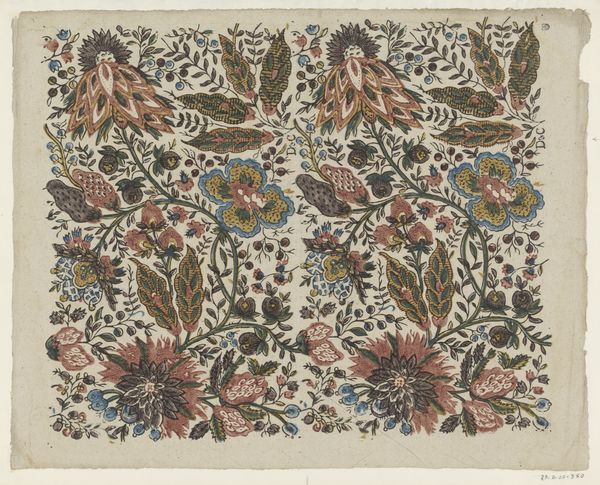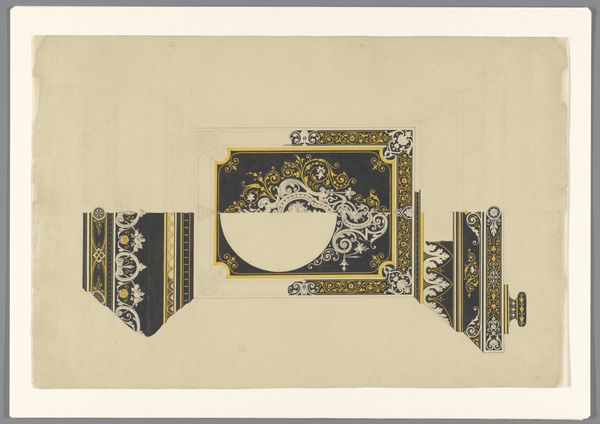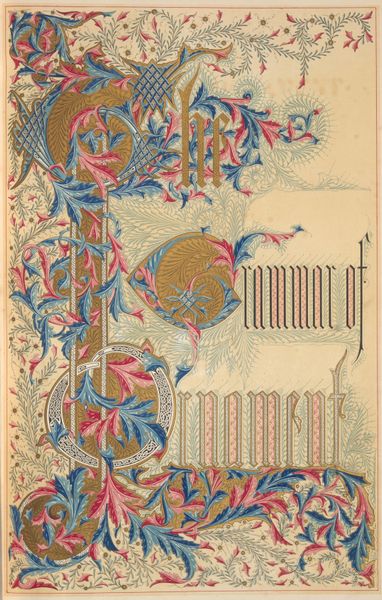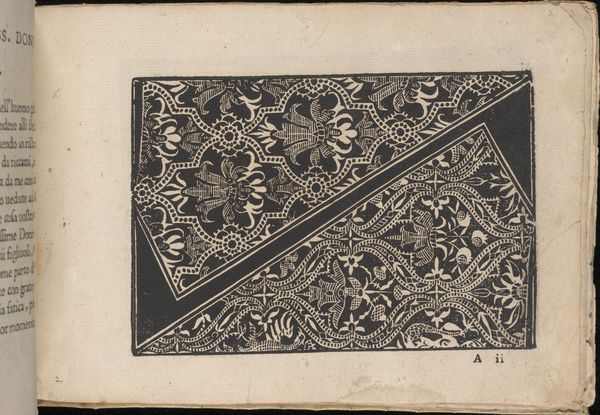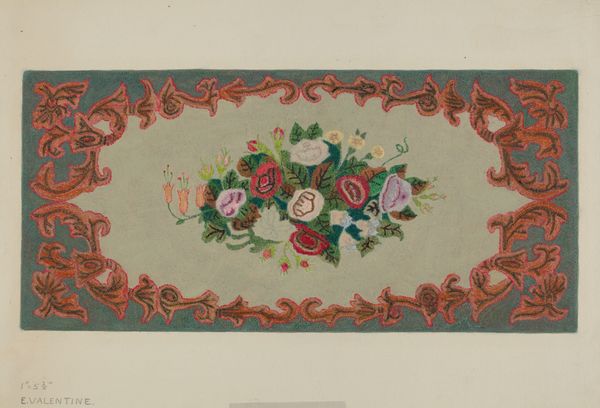
Ontwerp voor de hoek van een tapijt met een rechthoekig bruin middenveld c. 1850 - 1880
0:00
0:00
Dimensions: height 168 mm, width 208 mm
Copyright: Rijks Museum: Open Domain
This watercolour is an uncompleted design for a carpet corner by an artist named C. Sancourt. While the date is missing, its combination of floral motifs and geometric patterning invites us to consider the cultural contexts that shaped its creation. The design, likely intended for production in France, speaks to the burgeoning industry of decorative arts in the 19th century and the rise of the bourgeoisie, who sought to fill their homes with fashionable items. Floral patterns were particularly en vogue, reflecting a wider cultural interest in the natural world. At the same time, geometric patterns signalled the influence of emerging industrial processes and the aesthetics of mass production. One can imagine how these motifs might reflect or shape class identities. Was this design for the elite or aspiring middle class? Historians consult pattern books, trade records, and social histories to better understand the meanings embedded in such designs. The beauty we see is always shaped by the times in which it was created.
Comments
No comments
Be the first to comment and join the conversation on the ultimate creative platform.
